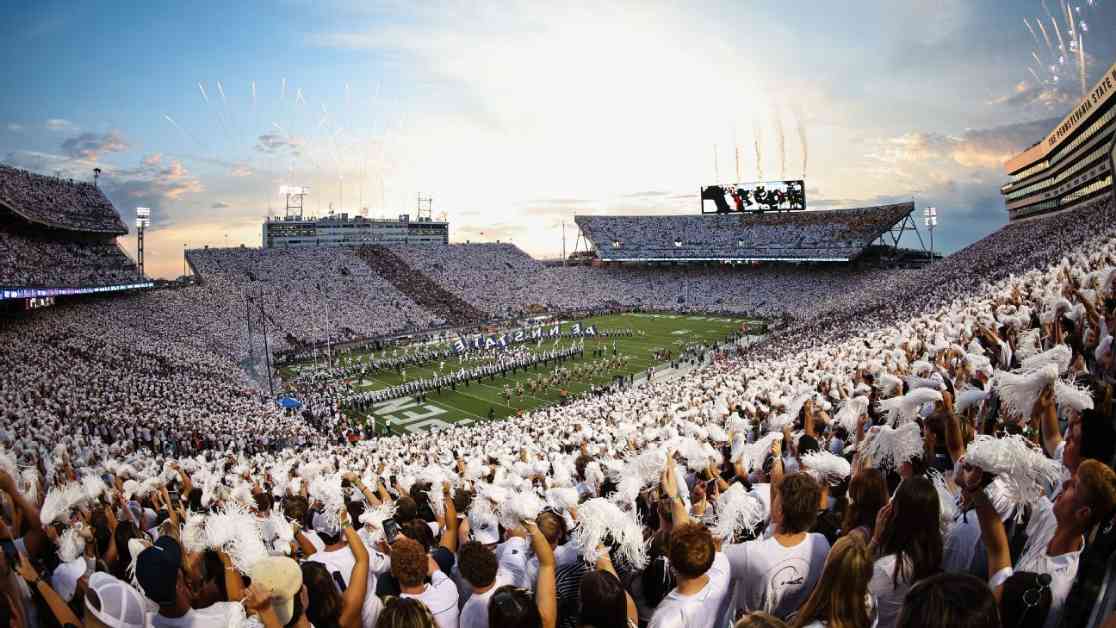The NHL has always been synonymous with ice, blades, and skates. But in recent years, the league has taken its game beyond the confines of traditional arenas, venturing into the great outdoors for some of the most spectacular events in hockey history.
Ohio Stadium, commonly known as the Horseshoe, found itself in the limelight when the NHL considered it as a potential venue for outdoor games. This iconic stadium, with a seating capacity of over 90,000 fans, stood as a majestic backdrop for the league’s vision. However, a significant obstacle stood in the way of hosting winter events at this historic site – plumbing issues.
Colin Thompson, Ohio State’s senior associate athletic director for facilities and events, shed light on the challenges faced by the stadium. He mentioned that the harsh Midwest winters posed a threat to the stadium’s infrastructure, necessitating the implementation of measures to protect against frozen water and sanitary lines. Without proper plumbing facilities, hosting NHL winter events was a distant dream.
The tide began to turn when the College Football Playoff expanded, requiring the Buckeyes to prepare for hosting first-round games on campus. This development prompted the start of a phased multi-million dollar project to install heat trays at Ohio Stadium. The successful completion of this project allowed the Buckeyes to host their first winter event, a home playoff game in December.
With Ohio Stadium now equipped for winter events, the NHL seized the opportunity to host the Stadium Series game featuring the Columbus Blue Jackets and Detroit Red Wings. This game, scheduled for Saturday, is anticipated to draw one of the largest crowds in NHL outdoor game history, second only to the 2014 Winter Classic at Michigan Stadium.
The NHL’s plans extend beyond Ohio, with the announcement of hosting two games in Florida – Miami and Tampa Bay. Despite the challenges posed by the region’s humidity, the league is determined to create a professional-grade ice surface for these games, promising yet another spectacle for hockey fans.
Expanding Horizons: The Future of NHL Outdoor Games
As the NHL continues to push boundaries and explore new horizons, questions arise about the future of outdoor games. Steve Mayer, president of NHL content and events, addressed concerns about potential fatigue from repeated team and venue appearances. While certain teams like the Chicago Blackhawks have made multiple outdoor game appearances, the league remains committed to reimagining the outdoor game experience.
Mayer emphasized the league’s interest in unconventional venues, such as auto racing tracks or horse tracks, to add a fresh dimension to outdoor games. The prospect of expanding to locations like Utah or Penn State’s Beaver Stadium has sparked discussions, although logistical challenges and scheduling constraints present hurdles to overcome.
The allure of hosting outdoor games in neutral sites, akin to the Canadian Heritage Classic, opens up possibilities for unique and captivating experiences. While iconic landmarks like Lake Tahoe, Central Park, or Lake Louise remain on the league’s radar, the focus remains on finding venues that can accommodate fan attendance.
Looking Ahead: Innovation and International Expansion
Amidst the evolution of signature events, the NHL remains committed to international competition and innovation. The league’s plan to stage a World Cup of Hockey featuring at least eight teams every two years starting in 2028 signals a broader vision for global engagement.
Gary Bettman, NHL commissioner, invited European venues to bid as host cities for the World Cup, hinting at the league’s interest in expanding its reach beyond North America. With inquiries pouring in from around the world, the possibility of an overseas outdoor game looms on the horizon, promising a new chapter in NHL history.
As the NHL navigates the ever-changing landscape of professional sports, one thing remains certain – the league’s dedication to providing unparalleled entertainment and excitement for fans worldwide. The future of outdoor games holds untold possibilities, showcasing the NHL’s unwavering commitment to innovation and growth. And with each puck drop on a frozen stage, the magic of outdoor hockey continues to captivate audiences, setting the stage for a new era of exhilarating experiences.
The end.


















